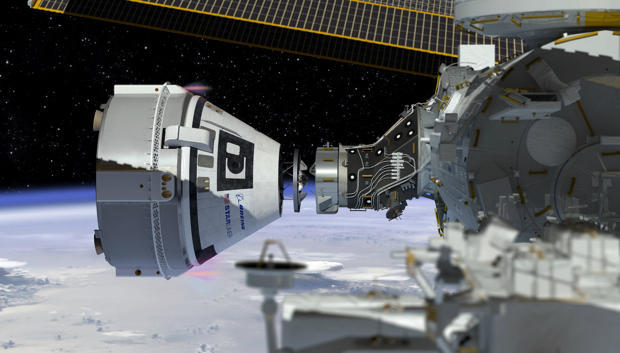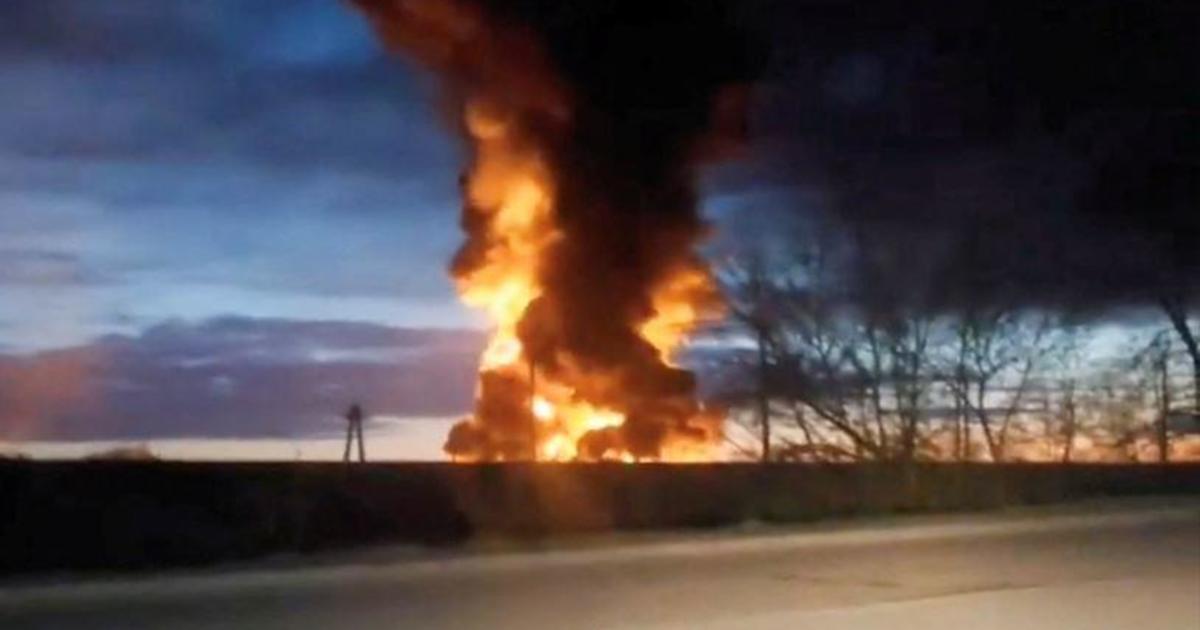Boeing Starliner capsule blasts off in dramatic abort test
In a spectacular test, Boeing fired an unpiloted Starliner crew capsule's abort engines Monday, triggering a high-speed boost from ground level to a height of more than 4,000 feet to prove the spacecraft can safely propel a crew to safety in the event of a catastrophic booster failure.
While one of three main parachutes failed to deploy during the capsule's descent, Boeing officials said the spacecraft was designed to land safely with just two and that the abort system met the requirements for a successful test.
"We will review the data to determine how all of the systems performed, including the parachute deployment sequence," a spokesman said. "It's too early to determine why all three main parachutes did not deploy, however, having two of three deploy successfully is acceptable for the test parameters and crew safety."
Chris Ferguson, commander of NASA's final shuttle mission and now a senior manager with Boeing, will join two NASA astronauts for the first piloted flight of a Starliner next year. He said the abort system "worked pretty much the way I always envisioned. ... Hopefully our NASA customers are equally happy with the progress we've made."
Mounted atop a short support platform at the White Sands Missile Range in New Mexico, the Starliner's four powerful launch abort engines, along with 20 smaller maneuvering jets, ignited at 9:15 a.m. EST, accelerating the capsule, carrying an instrumented test dummy, from zero to 650 mph — straight up — in just five seconds.
Belching jets of fiery exhaust, the big abort engines shut down as planned at the end of that five seconds, followed by the maneuvering thrusters about five seconds after that.
The capsule continued climbing, arcing over at the high point of its trajectory and flipping about to put its base in the direction of travel. After jettisoning its forward heat shield, drogue parachutes deployed and stabilized the spacecraft before two red-and-white main parachutes unfurled about 26 seconds into the flight.
It was not obvious in tracking camera video what prevented the third parachute from unfurling.
"On the good side, the vehicle is designed to safely land with two parachutes," Ferguson told Spaceflight Now in a post-test interview. "It's designed to safely land with five of six airbags. There's redundancy in there. While it was unintentional, we demonstrated that you can safely land with two parachutes. So I look at that as a plus."
He said Boeing engineers will study the anomaly to find out what went wrong, adding "we'll make sure that we understand what the root cause was and make sure that we've adequately mitigated whatever caused it before we take humans on board."
Unlike the Apollo lunar capsules that ended their flights with ocean splashdowns, the Starliner is designed to land at ground facilities in the western U.S., jettisoning its heat shield and inflating airbags to cushion impact while descending under the main parachutes.
For Monday's test, the two main parachutes and airbags appeared to work normally and the Starliner descended to a relatively gentle touchdown about a minute and a half after takeoff.
In an actual launch abort, the Starliner would land in the Atlantic Ocean northeast of Cape Canaveral.
Boeing has encountered a variety of technical hurdles and setbacks during Starliner development, putting the program well behind schedule. But the long-awaited pad abort test marks a key milestone in the company's drive to finally ready the CST-100 Starliner for an unpiloted flight to the International Space Station (ISS). Despite the parachute anomaly, a Boeing spokesman said the company is still targeting Dec. 17 for the test flight.
If that test goes well, Boeing and NASA will set their sights on a piloted test early next year that will carry three crew members to the space station for a six-month stay.
SpaceX also is building an astronaut ferry ship, known as the Crew Dragon, that also is in the final stages of preparation for piloted flights to the space station. Unlike the Starliner, the Crew Dragon is designed to end its missions with ocean splashdowns.
The Crew Dragon already has completed a low-altitude pad abort test and an uncrewed flight to the station. An in-flight abort test is planned for early December, setting the stage for a piloted flight to ISS sometime next year.
Both companies face multiple technical hurdles and reviews before operational crew rotation flights can begin, and it's not yet known which spacecraft will launch a crew into orbit first.
However it plays out, NASA managers are hopeful 2020 will mark the end of a nine-year hiatus in U.S. human spaceflight that began with the space shuttle's retirement in 2011.
Boeing holds NASA contracts valued at $4.2 billion to build and launch the Starliner while SpaceX was awarded $2.6 billion for Crew Dragon development. The goal is to end the agency's sole reliance on Russian Soyuz spacecraft to ferry astronauts to and from the space station.
Both commercial crew ships are designed to enable safe aborts at any point from the launch pad to orbit.
While SpaceX already has carried out an on-pad abort test and plans an in-flight demonstration, Boeing engineers said the White Sands test should suffice to demonstrate the Starliner abort system will work as required if a crew ever needs to escape from its Atlas 5 booster.
The capsule is equipped with four powerful launch abort engines, or LAEs, each one generating 40,000 pounds of thrust, and 20 orbital maneuvering and attitude control — OMAC — engines providing 1,500 pounds of push each.
The launch abort engines would only be used in an actual low- to mid-altitude abort while the OMAC engines would normally be used to complete the spacecraft's trip to orbit after separation from its Atlas 5 second stage. During a low-altitude abort, the OMAC engines are used to provide additional thrust and attitude control.
The Starliner also is equipped with 28 less-powerful reaction control system engines for use during high-altitude aborts and, in a problem-free flight, to make small changes in the spacecraft's orbit and for docking with the ISS.







